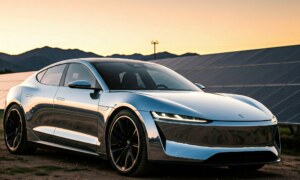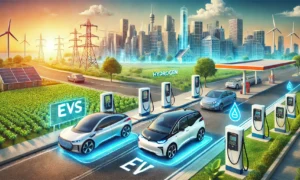Electric vehicles (EVs) are gaining popularity as the world shifts towards sustainable transportation. However, despite the growing acceptance, several myths still surround EVs, causing confusion for potential buyers. In this blog, we’ll debunk the top 10 myths about electric vehicles and set the record straight.
Myth: EVs Have a Very Limited Driving Range
Reality: While early EVs had limited ranges, modern electric vehicles have improved significantly. Many EVs today, such as the Nexon EV, Curvv EV MGZS EV and Hyundai Ioniq 5 Electric, offer ranges of 300-500 km on a single charge. For the average daily commute of 30-40 km, this is more than enough, making range anxiety a thing of the past.
Myth: EVs Are Too Expensive
Reality: While EVs may have a higher upfront cost, they offer long-term savings. Lower fuel costs, reduced maintenance (thanks to fewer moving parts), and government incentives like tax breaks and subsidies make EVs cost-effective in the long run. Additionally, as technology advances, the price of EVs is decreasing, bringing them closer to parity with internal combustion engine (ICE) vehicles.
Myth: EVs Take Too Long to Charge
Reality: Charging times depend on the type of charger. With fast chargers, you can charge an EV up to 80% in as little as 30-40 minutes. Home chargers, while slower, allow you to conveniently charge your car overnight. Public charging infrastructure is also expanding rapidly, making it easier to charge on the go.
Myth: EVs Are Not as Powerful as Petrol or Diesel Cars
Reality: EVs can actually be more powerful than traditional vehicles. Electric motors deliver instant torque, providing faster acceleration and a smoother driving experience. For example, the Tesla Model S can go from 0 to 100 km/h in just under 3 seconds, outperforming many high-performance petrol cars.
Myth: EVs Aren’t Really Eco-Friendly
Reality: Modern EV batteries are designed to last for hundreds of thousands of kilometers. Many manufacturers offer warranties of 8 years or more on their batteries. With proper care, EV batteries can retain most of their capacity even after years of use. Moreover, battery recycling technology is improving, reducing the environmental impact.
Myth: There Aren’t Enough Charging Stations
Reality: Charging infrastructure is expanding rapidly across the world, including in India. Public charging stations are increasingly available in urban areas, shopping malls, highways, and parking lots. Moreover, home charging solutions allow most users to conveniently charge their vehicles overnight, reducing the need for frequent trips to charging stations.
Myth: EVs Are Only Good for Short Trips
Reality: While EVs excel in city driving, they are also suitable for long-distance travel. The increasing number of fast-charging stations along highways means you can take road trips with minimal interruptions.
Myth: EVs Are Dangerous to Drive in Rain or Waterlogged Roads
Reality: Electric vehicles are designed to meet the same safety standards as traditional cars, including water resistance. EVs undergo rigorous testing to ensure they can handle various weather conditions. Many EVs have IP-rated battery enclosures that protect against water ingress, making them as safe as any conventional vehicle in rain or flooded conditions
Myth: EVs Are Not Good for Cold Climates
Reality: While cold weather can slightly reduce an EV’s range, modern EVs are equipped with battery management systems that help regulate temperature. Features like preconditioning allow the vehicle to warm up the battery before driving, reducing the impact of cold weather. Many EVs perform well even in harsh winter conditions, as demonstrated in countries like Norway and Canada.
Conclusion
Electric vehicles are no longer the niche technology they once were. The myths surrounding EVs are quickly being debunked by advancements in technology and infrastructure. With lower running costs, improved driving range, and a smaller environmental impact, EVs are a smart and sustainable choice for the future of transportation. Don’t let outdated misconceptions hold you back—embrace the shift to electric!




Leave a comment